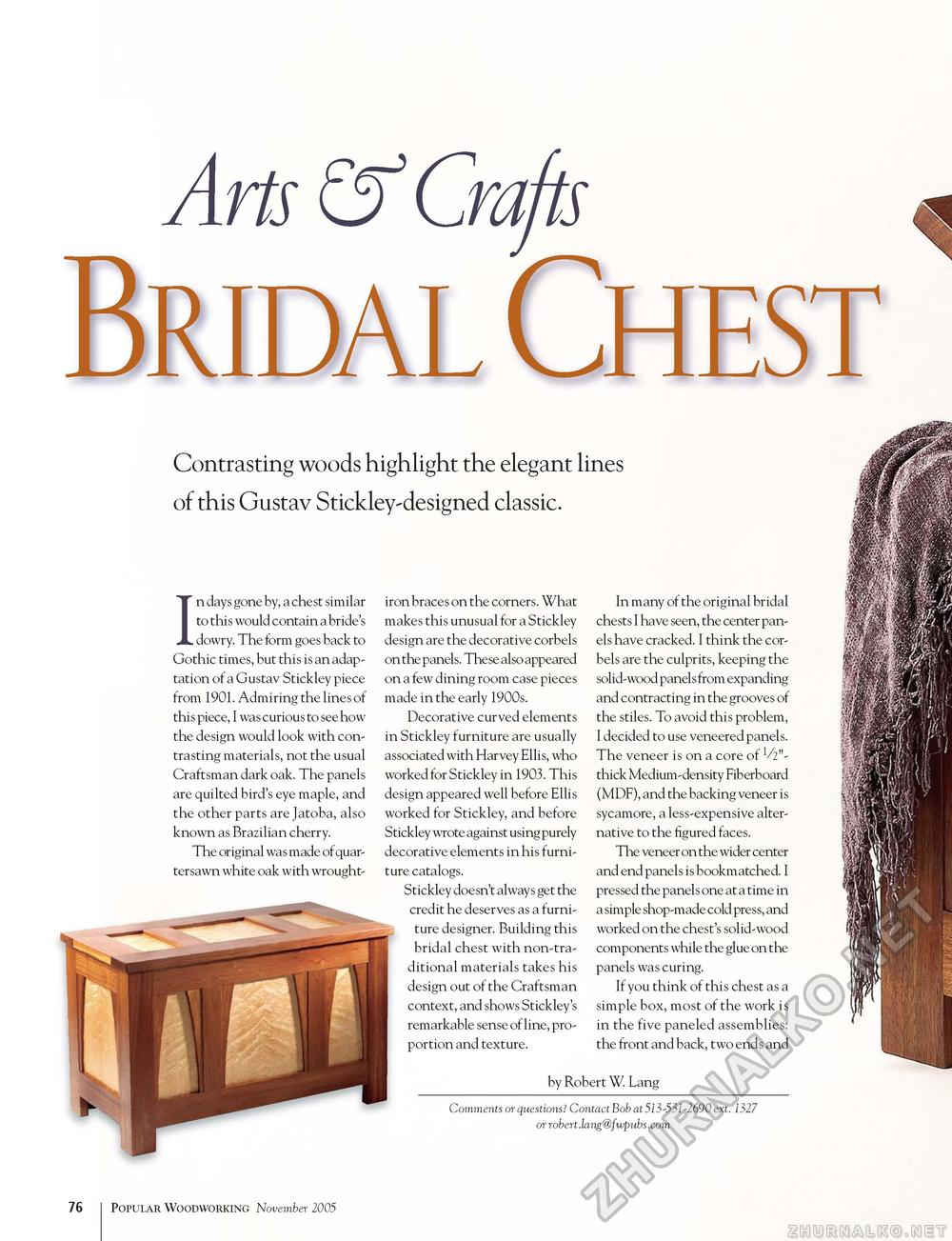Popular Woodworking 2005-11 № 151, страница 79
Bridal ChestContrasting woods highlight the elegant lines of this Gustav Stickley-designed classic. In days gone by, a chest similar to this would contain a bride's dowry. The form goes back to Gothic times, but this is an adaptation of a Gustav Stickley piece from 1901. Admiring the lines of this piece, I was curious to see how the design would look with contrasting materials, not the usual Craftsman dark oak. The panels are quilted bird's eye maple, and the other parts are Jatoba, also known as Brazilian cherry. The original was made of quar-tersawn white oak with wrought- iron braces on the corners. What makes this unusual for a Stickley design are the decorative corbels on the panels. These also appeared on a few dining room case pieces made in the early 1900s. Decorative curved elements in Stickley furniture are usually associated with Harvey Ellis, who worked for Stickley in 1903. This design appeared well before Ellis worked for Stickley, and before Stickley wrote against using purely decorative elements in his furniture catalogs. Stickley doesn't always get the credit he deserves as a furniture designer. Building this bridal chest with non-traditional materials takes his design out of the Craftsman context, and shows Stickley's remarkable sense of line, proportion and texture. In many of the original bridal chests I have seen, the center panels have cracked. I think the corbels are the culprits, keeping the solid-wood panels from expanding and contracting in the grooves of the stiles. To avoid this problem, I decided to use veneered panels. The veneer is on a core of 1/2"-thick Medium-density Fiberboard (MDF), and the backing veneer is sycamore, a less-expensive alternative to the figured faces. The veneer on the wider center and end panels is bookmatched. I pressed the panels one at a time in a simple shop-made cold press, and worked on the chest's solid-wood components while the glue on the panels was curing. If you think of this chest as a simple box, most of the work is in the five paneled assemblies: the front and back, two ends and by Robert W. Lang n. Comments or questions? Contact Bob at 513-531-2690 ext. 1327 or robert.lang@fwpubs.com 76 Popular Woodworking November 2005 |








